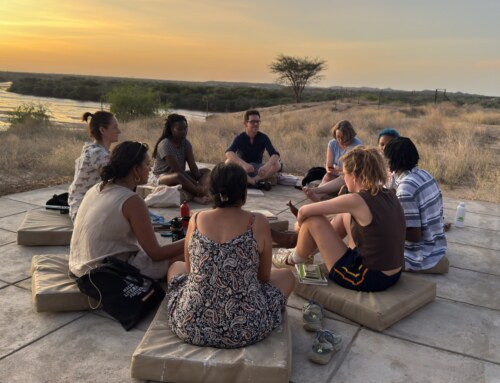The students started off the week being introduced to their newest professor, Dr. Mikael Fortelius, a professor at the University of Helsinki, who will be teaching the Vertebrate Paleontology module.
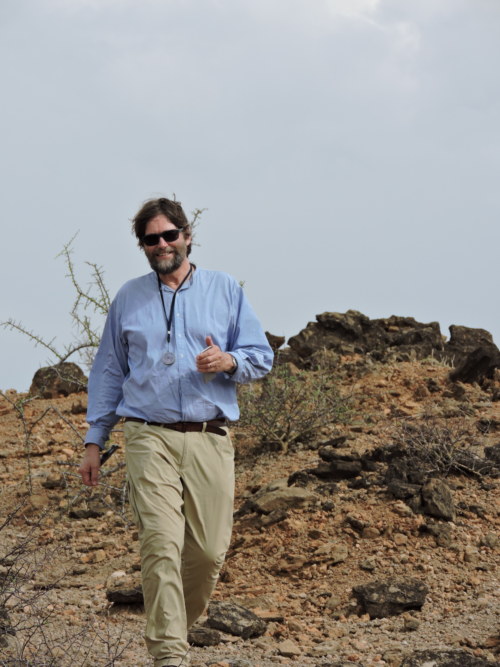
Dr. Mikael Fortelius! (Photo: Petra Peretin)
They were introduced to the research labs at Illeret and had the opportunity to look at the vast collection of fossils, learning how to identify the unique features that make up the different groups of animals found at Illeret; such as bovids, suids, and equids.
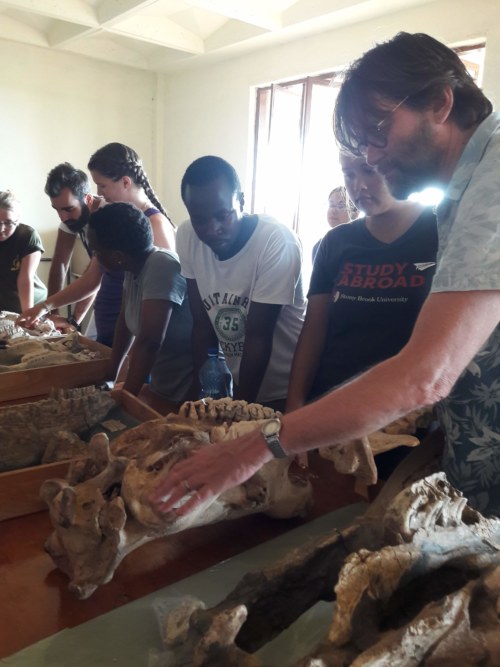
Dr. Mikael Fortelius showing the students the unique features of dentition! (Photo: Asta Fortelius)
Their first day ended with an excursion to Area 6 to survey for fossils, giving the students practice in the identification of fossils by looking at features that would indicate what bone they were observing and what it could tell us about the animal.
The students received lectures on the basics of paleontology such as mammalian anatomy and teeth, jaws, and chewing and the important roles each of these things play in reconstructing an evolutionary timeline for these mammals and how they interacted with their challenging environments. Lectures were followed up by lab activities that gave the students the chance to apply what they had learned in the classroom and make inferences about each specimen. It gave them the opportunity to also ask questions about the differences easily observed among the specimens and why it might be that they evolved certain traits in terms of the functional morphology of different limb lengths, size of muscle attachment sites, and different uses of their teeth.
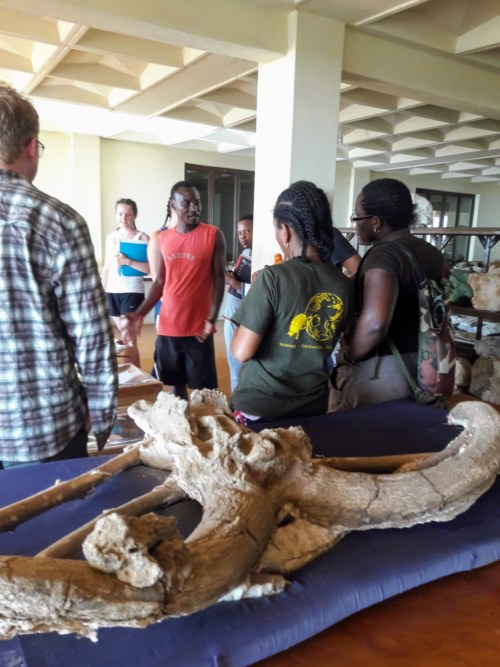
Martin showing the students the fossil collections found at Illeret (Photo: Asta Fortelius)
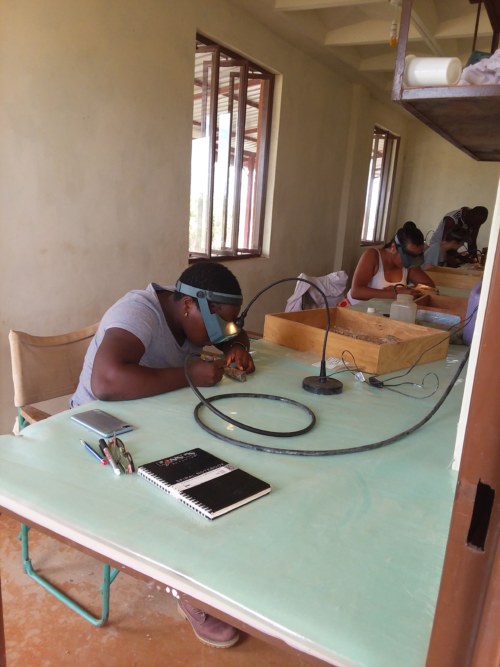
Eve (left) and Veronica (right) cleaning fossils in the lab (Photo: Petra Peretin)
When the students weren’t in the classroom immersed in Mikael’s lectures or in the labs applying what they had just learned, they were in the field! The students were divided into three groups and were given a GPS and the coordinates to early hominin sites, most of which hadn’t been visited since the late 70’s. Each team was given the task of locating and marking the site, taking pictures of the geological and faunal context of the area, and writing a report that will be of use for future research.
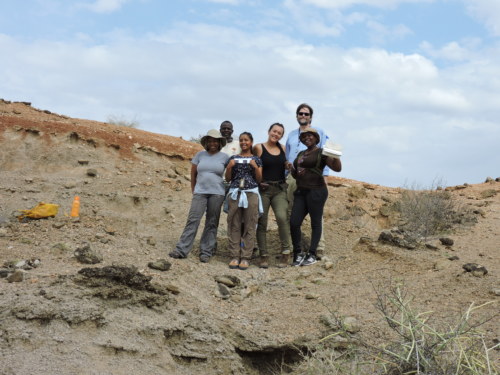
The students on the hunt for early hominin sites (From left to right: Joy, Friyat, Veronica, Everlyne) accompanied by Sale (back left) and Dr. Mikael Fortelius (back right)( Photo: Petra Peretin)
Later in the week the students learned about the use and importance that ecometrics, and the role it plays in understanding past environmental conditions. Ecometrics focuses on measuring functional traits in teeth and bones to make assessments on environmental conditions. One of these functional traits is the size of tooth crowns. High levels of hypsodonty (high crowns) in teeth are good indicators that a mammal was a herbivore adapted to eat mostly grass, and to endure high levels of wear. On the contrary, a lack of hypsodont (also known as brachyodont) teeth is a good indicative of an adaptation to diets with softer physical properties. Based on this, paleontologists can reconstruct the paleoenvironments in which these animals lived in.
Not only did the students hunt for signs of early hominin ancestors, they also learned how to survey an area for potential excavation sites. Before a site can be properly excavated, the surface has to be surveyed and marked and then test trenches are done to see if that area has potential to yield any interesting finds. Once that has been determined boundaries are set and the excavation can commence. The students were able to learn this first hand as they completed each of these tasks over by the old staff mess hall, as they sieved and dug for signs of bones, charcoal, and anything else indicative of human occupation in the area.
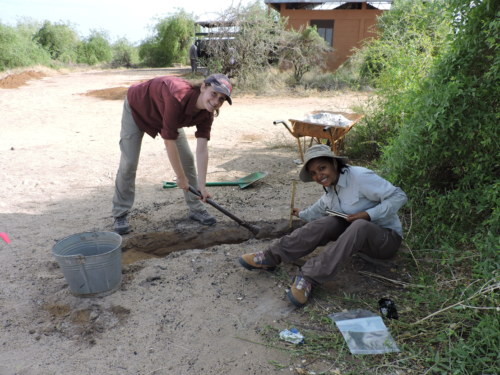
Izzy (left) and Friyat (right) digging a trench! (Photo: Petra Peretin)
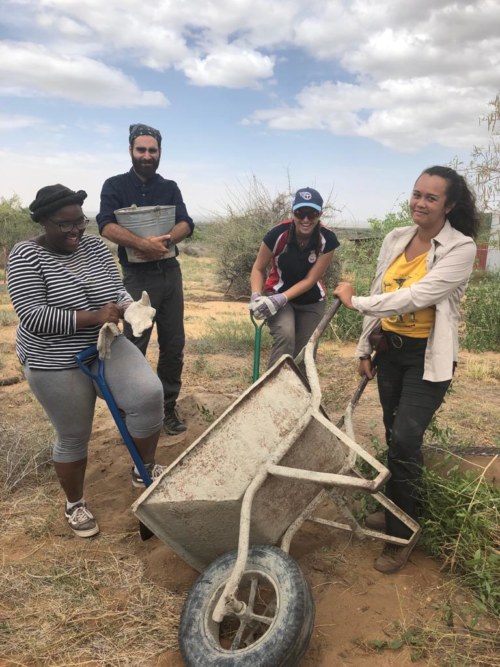
The students (From left to right: Latay, Alex, Tegan, and Veronica) enjoying themselves as they sieve through buckets of sediments! (Photo: Petra Peretin)
Dr. Mikael Fortelius also taught the students about the history of life on Earth, starting with the formation of our planet approximately 5 billion years ago. As they went through history up to the point of the Holocene which dates back to 10,000 years ago, he explained important events that occurred along the way. Some of these events included the beginning of life on earth, the appearance of the first land plants, the appearance of terrestrial mammals, and the five mass extinction events that have taken place. Of these, the extinction of the dinosaurs 65 million years ago, which erased 76% of all species on earth, and the most devastating mass extinction event which took place 251 million years ago and eliminated 96% of earth’s species, stand out. The students divided into two teams and using twine and flagging tape reconstructed this timeline.
The students had their first exam for the Paleontology module, incorporating the different skills they have acquired throughout the week. These included the identification of bones, surveying potential excavation sites, writing up reports, and answering questions based on their lectures. During their rest day, some of the students eagerly took part in a community activity at the Ileret clinic led by Joanna, the community development manager for TBI.
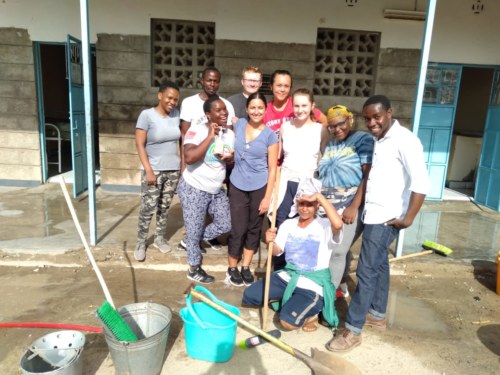
The students and their TA Petra gather for a group picture at the local health clinic! (Photo: Sale)
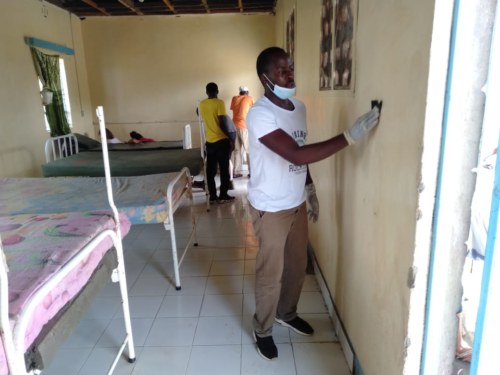
Benjamin helping to clean the clinic (Photo: Sale)
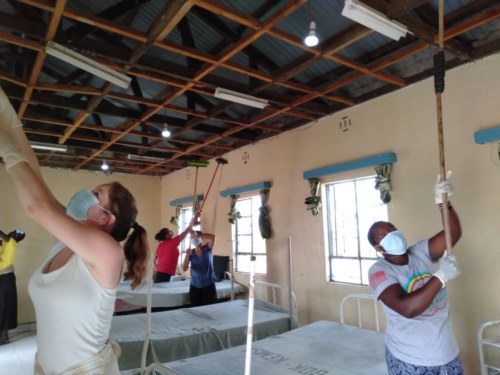
Izzy (left) and Eve (right) helping to dust the ceiling (Photo: Sale)
The following week the students spend their time working on their individual projects and studying for their oral exam that took place on Thursday. Spending the mornings in lecture discussing with Dr. Mikael Fortelius the Anthropocene Epoch (dating back to when humans start making a global impact) and the possible outcomes of the ever increasing population expansion rates. The students worked diligently throughout the week, ending the Paleontology module on a positive note. As we say goodbye to Dr. Mikael Fortelius and Paleontology, we welcome Dr. Tracey Kivell who will be teaching the Human Evolution course over the next two weeks.

